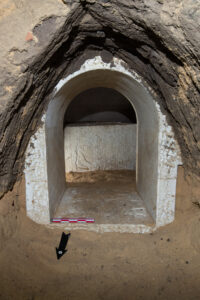
A long sequence of apotropaic sayings against snakebite from the Pyramid Texts covers the north (entrance) wall . Interestingly, the snakes mentioned in these magical texts both represented a potential danger and could serve as powerful protectors of the deceased and his mummy. “While the entrance to the nearby Menechinekon’s burial chamber was protected by the guardians of the gates of the 144th chapter of the Book of the Dead, in the case of Džehutiemhat, snakes from the Pyramid Texts play this role,” adds Renata Landgráfová, director of the Czech Institute of Egyptology at the FF UK and an expert on the ancient Egyptian language and texts. The south and west walls are covered with a sacrificial ritual and an extensive sacrificial list. On the ceiling of the burial chamber there are depictions of the sun god’s journey through the sky, first in the morning and then in the evening celestial bar. The depictions are accompanied by hymns to the rising and setting sun.
Inside the burial chamber covered with relief decoration is a large stone sarcophagus, which also bears hieroglyphic inscriptions and depictions of gods, both outside and inside. The upper side of the sarcophagus lid is decorated with three columns of hieroglyphic text with the liturgy of the 178th chapter of the Book of the Dead , which is composed of excerpts from the much older Pyramid Texts . The longer sides of the lid are decorated with the 42nd chapter of the Book of the Dead dedicated to the deification of parts of the body of the deceased, including depictions of individual deities to which the deceased is compared. The shorter walls of the lid then bear images of the goddesses Eset and Nebtheta, with accompanying texts offering protection to the deceased.
On the outer walls of the sarcophagus there are excerpts from the Coffin Texts and the Pyramid Texts , which partially repeat sayings that already appear on the walls of the burial chamber. On the bottom of the inner wall of the sarcophagus bath, the goddess of the West is depicted, and its inner sides bear the so-called canopic sayings, spoken by this goddess and the earth god Geb. “The Goddess of the West inside the sarcophagus represents the protector, guide and symbolic mother of the deceased,” explains Jiří Janák, who analyzes and interprets religious and magical texts as part of field research. All the mentioned religio-magical texts were intended to ensure the deceased a smooth entry into a blissful and well-provided eternal life in the afterlife.
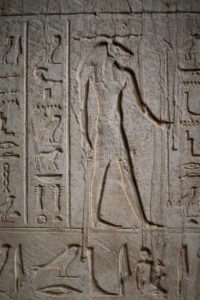
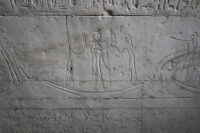
* This article was originally published here





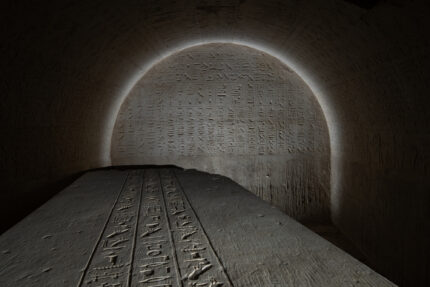
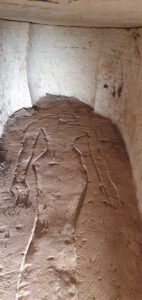



No comments:
Post a Comment